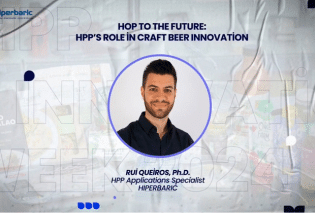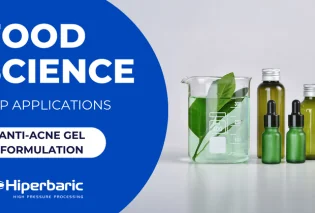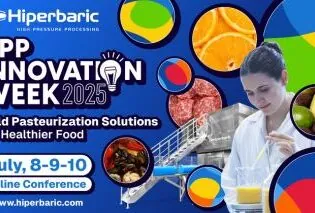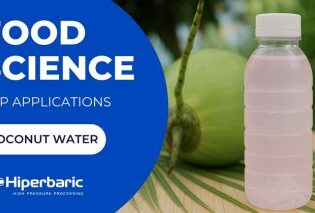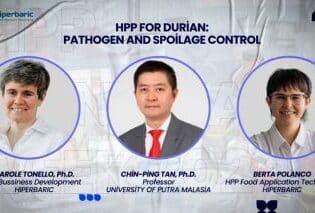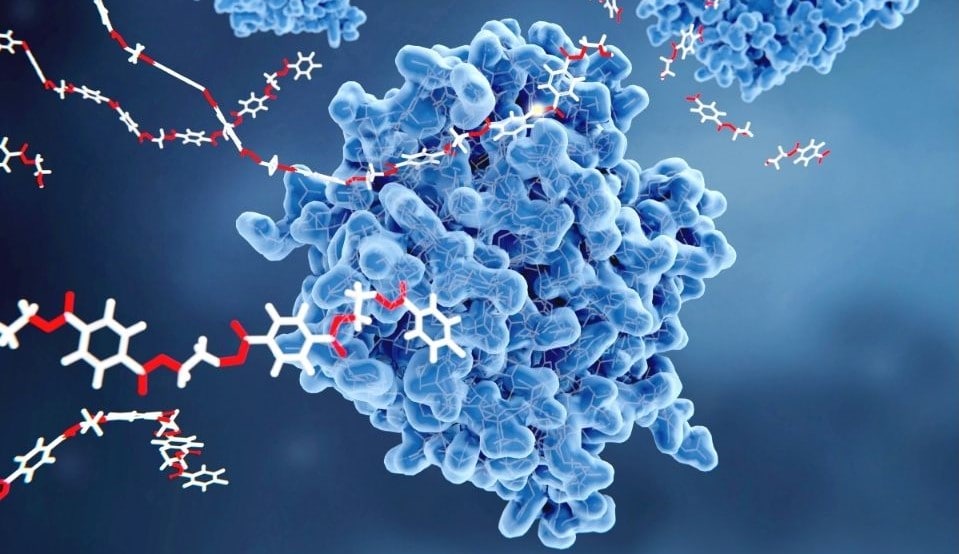
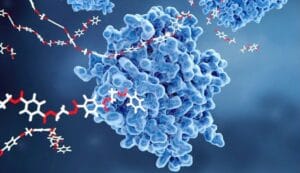
High pressure processing (HPP) is commonly applied to a variety of food products to inactivate pathogenic and spoilage microorganisms. Although HPP does not affect the small molecules usually responsible for color, flavor, and nutritional value, it may change the 3D structure of some proteins. These changes in structure can be tailored to improve the proteins’ technological properties, increasing, for instance, their ability to act as emulsifiers or thickeners. This may reduce or even eliminate the need for additives, enabling a clean label with fewer ingredients. Furthermore, these changes can be also used as strategies to develop new products.
High pressure processing (HPP) is a well-known non-thermal technology mainly used in the food industry as a cold pasteurization process, which allows the inactivation of pathogens and vegetative spoilage microorganisms. It does not significantly affect the physicochemical properties of foods, like color or flavor, and has a minimal impact on bioactive compounds.
HPP is currently applied to a wide variety of foods, therefore, given the rise in demand for plant-based proteins, it is not surprising that more and more producers use HPP to make their plant-based products safe and with a longer shelf-life. HPP is a kill step typically applied to foods in their final packaging, which reduces (or even eliminates) the need for added preservatives, contributing to a cleaner label.
Still, the contribution of pressure to a clean label can be further explored. Proteins, in addition to their nutritional role, provide several technical functions in the quality and stability of food products. Therefore, they can be used as technological ingredients to improve food properties, being commonly used as emulsifiers, thickeners, or gelling agents. Studies have shown that pressure can be used to improve the functionality of proteins, and consequently reduce the number of additives needed, leading to a cleaner label with fewer ingredients.
How does HPP affect proteins?
HPP can be used to change the techno-functional properties of proteins. This happens due to the impact of pressure on the structure of proteins, which can be affected at different levels of their macromolecular organization (Figure 1). In short, the pressure “opens” the 3D structure of a protein and exposes buried sites within its structure. The level of exposure of these sites dictates the behavior of the proteins, inducing their aggregation (by promoting protein-protein interactions) or exposing hydrophobic sites which improves their emulsifying properties.
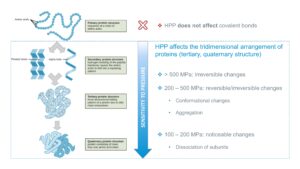
It is important to note that HPP does not affect the primary structure of proteins, and therefore their nutritional value remains the same.
The functionality of proteins improved by HPP
Proteins are often used as stabilizers for food emulsions due to their amphiphilic nature and surfactant activity. As previously mentioned, HPP can change the structure of proteins at different levels, as well their surface hydrophobicity and/or hydrophilicity. Consequently, it affects their tendency to adsorb on water/oil interfaces and availability to interact with other constituents of the food matrix. Therefore, HPP appears as a good approach to manipulate the surfactant properties of the proteins and their ability to facilitate the formation of emulsions and to stabilize them. An example of this effect can be seen in Figure 2, showing an improvement in the capacity of soy proteins to stabilize emulsions after HPP.

Food technologists can take advantage of this improved capacity of proteins to create and/or stabilize emulsions, to develop HPP food products with fewer additives (e.g. emulsifiers), which results in a clean label.
Gelation of proteins, naturally present in certain food products or added as additives, plays a key role in the texture of a lot of food products. As mentioned, the structural changes that HPP might cause may lead to protein gelation, which in turn may increase the viscosity and/or thickness of the products, reducing the number of thickeners necessary to achieve certain textures. Under certain conditions, it can even lead to the formation of gels. An example can be seen in Figure 3 that shows a gel entirely made of soy proteins and water, created with HPP.
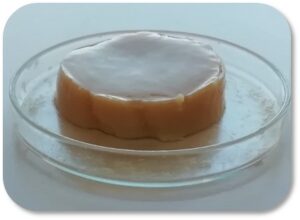
Application of HPP in protein modification
As mentioned above, HPP can improve the techno-functional properties of proteins naturally present in certain foods, avoiding the need for additives. Even if the addition of emulsifiers or thickeners is necessary, the number and/or amount of additives required may be substantially reduced, ultimately producing food products with clean labels.
This increase in the functionality of proteins can also be used to develop new products or even new categories. An example is the approach taken by Sim and co-workers, who used HPP to structure plant-based yogurts. In short, these researchers used pressure to gel proteins from different sources (e.g. mung bean proteins), to develop high protein plant-based yogurt-like products with desirable texture and flavor – Figure 4.

If you want to learn more about how high pressure processing can help you achieve cleaner labels or develop new products, do not hesitate to contact us.


